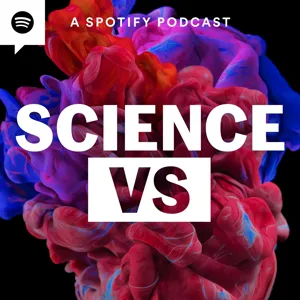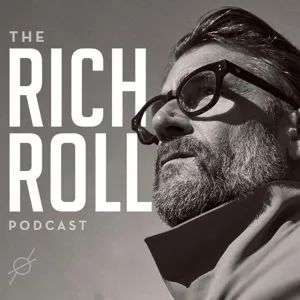Podcast Summary
Lab-grown meat as a solution to environmental issues in meat production: Lab-grown meat, produced by growing animal cells in a vat, could reduce the environmental impact of meat production and provide a more sustainable food source, as it doesn't require killing animals or harming the environment.
Our current food system, particularly the production of meat, has significant negative impacts on the environment. Approximately 15% of human-made greenhouse gas emissions come from livestock, and raising animals for food requires large amounts of land and water. Additionally, billions of land animals and fish are killed each year to meet our food demands. A potential solution to this issue is lab-grown meat, which was explored by journalist Chase Purdy at Memphis Meats in Berkeley, California. Memphis Meats produces lab-grown meat by growing animal cells in a vat, resulting in meat that looks, tastes, and feels like the real thing, but without the need to kill animals or harm the environment. This innovation could be a game-changer in the food industry, reducing the environmental impact of meat production and potentially providing a more sustainable food source for the future.
Lab-grown meat: A sustainable alternative to traditional meat production: 50 startups are racing to create lab-grown meat, offering textured meat products without animal slaughter, potentially reducing climate change and creating a cleaner food system.
Lab-grown meat is making significant strides towards becoming a viable and sustainable alternative to traditional meat production. This new technology, which is still in its infancy, is revolutionizing the food industry with its potential to create real, textured meat products without the need for animal slaughter. Lab-grown meat companies around the world are racing to be the first to market, offering a range of products from chicken nuggets and tenders to shrimp, duck foie gras, and even pet food. These companies argue that their meat is better for the planet and could help mitigate climate change. While the technology may seem strange and even a little frightening, it's an exciting development that could potentially lead to a cleaner and greener food system. Food writer Chase Purdy, who has been following the lab-grown meat industry for years, believes that it's finally making it into the big time with over 50 startups vying for market dominance. So, stay tuned as we explore the origins of this technology, the process behind creating lab-grown meat, and its potential impact on our food system.
The origins of cell cultured meat inspired by a soldier's memory of hunger during WW2: Cell cultured meat, also known as lab-grown or clean meat, was inspired by a soldier's memory of hunger during WW2 and envisioned as a solution to food scarcity using lab-grown meat instead of traditional farming methods.
The origins of cell cultured meat, also known as lab-grown or clean meat, can be traced back to a young soldier named Willem during World War 2. Captured and left to starve, the memory of hunger stayed with him and later inspired him to imagine growing meat in a lab instead of relying on traditional farming methods. This idea started off as a simple thought while touring medical labs, where he saw scientists trying to grow animal tissue in glass tanks. Instead of focusing on growing organs like everyone else, Willem envisioned growing edible meat, such as chicken fillets or steaks, on a larger scale to address food scarcity issues. This revolutionary concept, which is now gaining significant investments and attention, has its roots in the harsh realities of war and the basic human need for sustenance.
From solo project to mass production: The evolution of lab-grown meat: Lab-grown meat, starting as a solo project, has evolved with numerous startups working on various types and cost-effective methods, aiming to address ethical concerns, reduce environmental impact, and improve animal welfare.
Willem van Eelen's vision of lab-grown meat, which began as a solo project in the late 1990s, finally came to fruition in 2013 with the creation and public consumption of the world's first lab-grown burger. However, the initial product was expensive and not yet ready for mass production. Since then, numerous startups have entered the field, aiming to perfect various types of lab-grown meat, such as steak, shrimp, and even roasts, while finding more cost-effective methods and alternatives to fetal calf serum. Dr. Uma Valedi, a cardiologist and founder of Memphis Meats, shared insights into their process of extracting and growing cells from animals, such as chickens, outside their natural bodies. Despite the challenges and initial high costs, the potential for lab-grown meat to address ethical concerns, reduce environmental impact, and improve animal welfare continues to drive innovation in this field.
Growing cell-cultured meat is complex and challenging: Leading researchers use bioreactors to grow cells without a body, but it's difficult to mimic animal tissue and cells don't always cooperate, requiring selective breeding and scaffoldings to guide growth.
Creating cell-cultured meat is a complex process that requires extensive research and experimentation. Uma, a leading figure in this field, uses a bioreactor to grow cells without a body, but it's challenging to mimic the intricacies of animal tissue. Cells don't always cooperate, and it can take weeks for them to grow, with many attempts resulting in failure. Uma's team selectively breeds the most cooperative cells and discards the uncooperative ones, aiming to create plump, fat cells similar to breeding chickens. However, they also face the challenge of preventing cells from growing randomly, leading them to build scaffoldings to help guide the cells' growth. Despite the challenges, Uma and his team continue to experiment with their secret recipe, hoping to perfect the process and bring cell-cultured meat to market.
Lab-grown meat: The future of sustainable consumption?: Lab-grown meat could be more environmentally friendly than traditional meat production due to reduced water usage and greenhouse gas emissions, but its large-scale production remains uncertain
Memphis Meats, a company producing lab-grown meat, is getting close to creating edible chicken, beef, and duck without the need for animals. The process involves growing cells in a lab, which then develop into meat-like chunks. However, the million-dollar question is whether this lab-grown meat will live up to its hype and be environmentally friendly if produced on a large scale. Dr. Carolyn Mattick, an environmental engineer at the University of West Florida, has analyzed the process and believes it could be more environmentally friendly than traditional meat production due to reduced water usage and greenhouse gas emissions. The production process would require large vats filled with thousands of liters of a salty goo, but if successful, it could provide meat lovers with their desired consumption without harming the planet. However, it remains to be seen if this technology can be scaled up efficiently and sustainably.
Cell-cultured meat's impact on the environment: Cell-cultured meat could reduce greenhouse gases but might not outperform pork and poultry. It offers significant benefits in water pollution and land use reduction, but proper waste management and eco-friendly ingredients are crucial for environmental sustainability. The overall impact depends on various factors.
While cell-cultured meat has the potential to reduce greenhouse gas emissions compared to beef production due to less methane emission, it might not be better than pork and poultry. However, cell-cultured meat could lead to significant environmental benefits in terms of water pollution and land use reduction. Yet, it's crucial for companies to properly manage their waste and use eco-friendly ingredients to ensure environmental sustainability. The overall impact of cell-cultured meat on the environment is not guaranteed and depends on various factors. Additionally, the safety of consuming cell-cultured meat is a concern that needs to be addressed.
Potential Safety Benefits of Cell Cultured Meat: Cell cultured meat could be safer due to absence of guts and slaughterhouses, but it's not the healthiest option and has larger environmental impact than plants.
While cell cultured meat may not have the long-term safety studies that traditional meat does, it could potentially be safer due to the absence of guts and slaughterhouses, which can harbor harmful bacteria like E. Coli and salmonella. However, it's important to note that cell cultured meat is not the healthiest option and still requires cooking. Additionally, producing cell cultured meat has a larger environmental impact than consuming plants, such as beans or nuts. Ultimately, reducing meat consumption is the most sustainable and healthiest choice. Despite the availability of information, people continue to consume large amounts of meat, and cell cultured meat may offer an alternative for those unwilling to give up meat entirely. Companies are banking on this obsession with meat and the belief that people will continue to consume it, regardless of its source.
The Edible Space Race: Bringing Cell Cultured Meat to Consumers: Cell cultured meat, grown from animal cells in a lab, is a potential future food source. The Edible Space Race initiative aims to make it accessible. Notable figures like Ira van Eelen are leading the way. Consuming meat from celebrities is a futuristic concept. The book '$1,000,000,000 Burger' provides more insight.
The future of food production is exploring new frontiers with the use of cell cultured meat. During this week's episode, we learned about the Edible Space Race, an initiative to bring this alternative meat source to consumers. With 82 citations available in the show notes and transcript, listeners can delve deeper into the topic. One notable figure in this field is Ira van Eelen, whose work was discussed. To learn more about his efforts, visit www.kindearth.tech. The episode was produced by Wendy Zuckerman and Chase Purdy, with contributions from various team members and researchers. An intriguing concept discussed was the idea of consuming cell cultured meat from celebrities. This futuristic concept involves growing cells from famous individuals in a lab and creating edible meat cubes. While this may sound unusual, it represents the potential possibilities of cell cultured meat. The episode also highlighted the book "$1,000,000,000 Burger" by Chase Purdy, which offers further insight into the world of cell cultured meat. Overall, the discussion underscores the innovative and transformative potential of cell cultured meat in the food industry.




